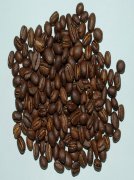Coffee beans roasted Sumatra 19-mesh Mantenin coffee beans


Baking Indonesia Sumatra Mandheling
Indonesian sumatra 19 mu mantenin raw beans look much better than regular mantenin.
A whiff of "herbal" smell can be detected during the dehydration phase, and baking stops at the beginning of the second explosion.
Note that the actual color is darker than the picture, tastes slightly sweet and sour,"herbal" taste, has a good body and purity.
Important Notice :
前街咖啡 FrontStreet Coffee has moved to new addredd:
FrontStreet Coffee Address: 315,Donghua East Road,GuangZhou
Tel:020 38364473
- Prev

Coffee roasting table of roasting stages of coffee beans
Degree description stage description stage description special point description flavor and appearance description refers to baking until the end of the first burst. Light baking is rarely used and is generally used only for testing. Cinnamon roasting is widely used in some canned coffee. The firepower is difficult to reach the bean core, and it is easy to cause half-cooked condition, so
- Next

Roast coffee beans roast PB in Lake Guibu, Congo
Roast PB (Congo KIVU LAKE PEABERRY) coffee cooked beans in Lake Guibu region of the Republic of Congo roasted raw beans PB (Congo KIVU LAKE PEABERRY) coffee raw beans PB raw beans in Lake Gebu region of the Republic of Congo look good, but can not stand careful selection, out of 100g raw beans, 48 defective beans are selected. It stopped at the beginning of the second explosion.
Related
- Beginners will see the "Coffee pull flower" guide!
- What is the difference between ice blog purified milk and ordinary milk coffee?
- Why is the Philippines the largest producer of crops in Liberia?
- For coffee extraction, should the fine powder be retained?
- How does extracted espresso fill pressed powder? How much strength does it take to press the powder?
- How to make jasmine cold extract coffee? Is the jasmine + latte good?
- Will this little toy really make the coffee taste better? How does Lily Drip affect coffee extraction?
- Will the action of slapping the filter cup also affect coffee extraction?
- What's the difference between powder-to-water ratio and powder-to-liquid ratio?
- What is the Ethiopian local species? What does it have to do with Heirloom native species?

